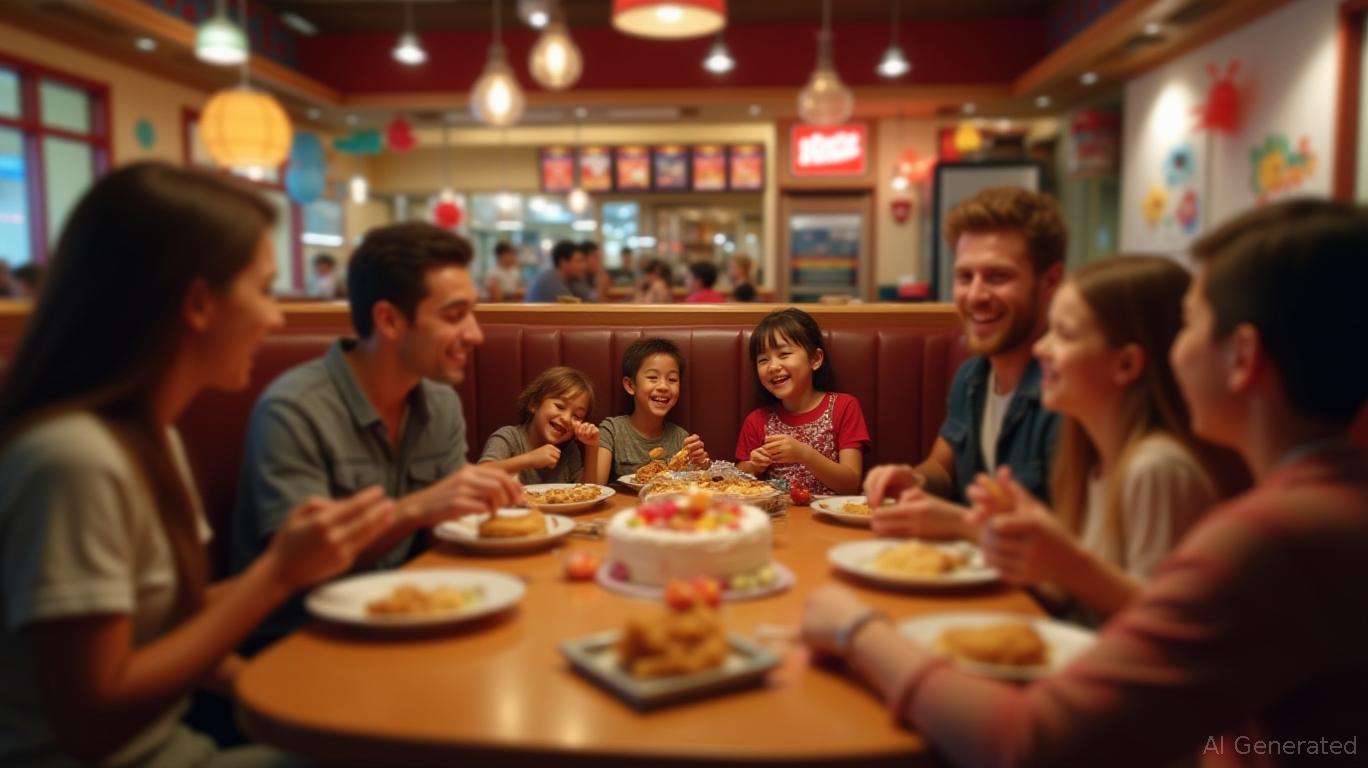Red Robin's Turnaround: Can Operational Gains Outpace a Struggling Sector?
The casual dining sector faces headwinds, yet
(RRGB) has shown unexpected resilience in its Q1 2025 earnings report. While the broader industry grapples with shifting consumer preferences and economic pressures, Red Robin's results hint at a potential turnaround—but can its operational improvements and strategic shifts overcome persistent challenges?
Operational Gains: A Fragile Foundation
Red Robin's Q1 results are a mixed bag of progress and lingering concerns. Net income turned positive at $1.2 million, a stark improvement from a $9.5 million loss in Q1 2024. Revenue rose 1% year-over-year to $392.4 million, driven by a 3.1% increase in comparable restaurant revenue. This growth stemmed from a 6.8% net menu price increase and a revised loyalty program, offsetting a 3.5% drop in guest traffic—a modest improvement from the 9.4% traffic decline in Q1 2024.
The company's adjusted EBITDA surged 108% to $27.9 million, reflecting cost discipline and operational efficiency. Debt reduction of $17.8 million lowered total borrowings to $171.7 million, while liquidity stabilized at $59.2 million. CEO David Pace's focus on four priorities—operational excellence, traffic recovery, financial strength, and brand reinvestment—has begun to bear fruit.
Leadership and Strategy: A Blueprint for Growth?
Pace's leadership has emphasized execution over expansion. Closing six underperforming restaurants and selling properties for $5.8 million signals a pragmatic approach to optimizing assets. The Red Robin Royalty loyalty program, launched in 2024, aims to boost repeat visits, though its impact is still nascent.
The CEO's emphasis on “everyday value” and family appeal aligns with the casual dining sector's shift toward affordability. Competitors like Chili's (with its 31.6% same-store sales growth) and Taco Bell (9% growth) have thrived by balancing value and quality. Red Robin's menu innovation—such as its “Burgers Built for Sharing”—is a step in the right direction, but its traffic decline underscores execution gaps.
Sector Challenges: A Tough Road Ahead
The casual dining sector remains in flux. While Chili's and Dutch Bros dominate with operational upgrades and loyalty programs, Red Robin's peers face hurdles. Chipotle's sales stumbled in Q1, and McDonald's posted its worst U.S. sales drop since 2020. Full-service restaurants saw a 3% traffic decline year-over-year, as consumers prioritize budget-friendly options.
Red Robin's Q2 outlook is cautious: a projected 3% same-store sales decline due to loyalty program headwinds. With debt at $171.7 million and liquidity constrained, the company must navigate these headwinds without compromising its operational gains.
The Bottom Line: A Gamble on Turnaround
Red Robin's Q1 results are a positive sign, but its path to sustained success is fraught with risks. The stock's 59.5% decline year-to-date reflects investor skepticism about its ability to revive traffic and compete in a cost-conscious market.
Investors should consider three factors:
1. Traffic Recovery: Can Red Robin reverse its 3.5% decline through marketing and menu innovation?
2. Debt Management: Will liquidity remain sufficient amid macroeconomic uncertainty?
3. Sector Trends: Can the casual dining segment rebound, or will consumers permanently shift to fast-casual alternatives?
Final Call: Proceed with Caution
Red Robin's Q1 turnaround is a start, but execution is the ultimate test. The stock's valuation—trading at just $3.13—offers a speculative entry point for investors willing to bet on management's ability to deliver on its priorities. However, the casual dining sector's struggles mean Red Robin must outperform not just itself but an increasingly competitive landscape.
Historical performance suggests caution: This underscores the high-risk nature of timing entries based on earnings reports alone.
For now, Red Robin is a “hold” with upside potential if Q2 results surprise to the upside. But investors should remain vigilant: this is a high-risk, high-reward scenario where operational missteps could reignite losses.
Act now only if you believe in Pace's strategy—and the resilience of the burger-driven casual dining model.

Comments
No comments yet